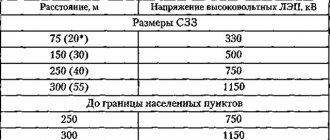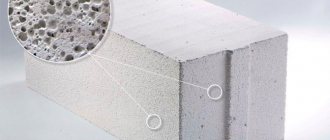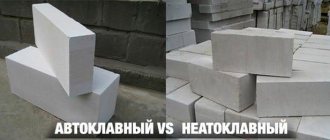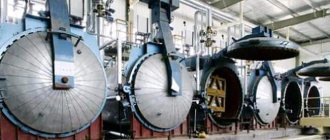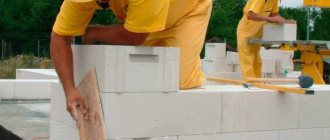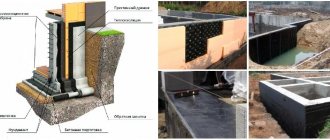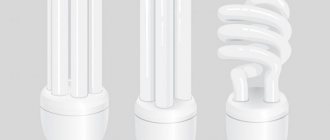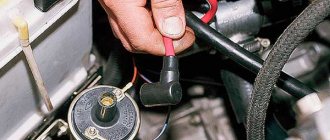Often “sofa experts”, companies producing competitive materials, and amateur builders claim that aerated concrete is harmful to health. Many materials have been published on this topic on the Internet, which at first glance present convincing arguments, talk about the toxins released and intolerance to their effects by allergy sufferers. Are such statements true?
In fact, pseudo-professionals, without bothering to understand the issue, often simply pass off someone else’s opinion as their own. There is nothing to say about competitors, because they have a direct interest in reducing the demand for this material. But since the problem has been voiced and heard by many people, in this article we will examine in detail the question about the gas block - is it harmful or not.
Composition of gas silicate
The basis of aerated concrete blocks of synthetic hardening, which are used in housing construction, are silica, cement, lime, water and substances that promote pore formation: sodium hydroxide and sulfate, aluminum powder. Of the total mass of concrete, the weight of gas-forming additives is only 0.1%.
- The introduction of these substances into the composition and the subsequent reaction lead to an increase in the volume of the mixture by 1.5-2 times. After hardening, a porous stone is obtained, which must gain strength under the influence of a certain temperature. The pore size in the finished material does not exceed 3 mm, and they are evenly distributed throughout the entire mass.
- Upon completion of the chemical reactions, aluminum oxide is formed, the total amount of which in concrete is less than, for example, in aluminum cookware. A stable oxide film protects aluminum from any chemical reactions, and in general this metal is widespread in our everyday life, and no one is afraid of it.
- The environmental friendliness of aerated concrete, like any other building material, is largely due to the radioactive background of natural raw materials, which may contain active chemical elements. This background for autoclave blocks is just over 50 Bq/kg at a rate of 370 - so there is nothing to worry about at all.
Even with gas-ash concrete, which contains fly ash or metallurgical slag, replacing sand or cement, the background radiation, although higher than that of gas silicate, does not exceed the permissible limit.
Is aerated concrete block harmful to human health?
But why is it considered that aerated concrete is harmful to health? To debunk such a myth, let’s look at the details of the production of the material and its composition. The technical conditions for the production of cellular concrete are presented in standard 25485, which determines absolutely all physical and mechanical characteristics, from sorption moisture to flexural and tensile strength. In particular, the document provides a list of materials that may be involved in such production.
Composition and properties of the material
Blocks of porous concrete are made in accordance with GOST 57334, brought into compliance with the European standard EN 771. According to the above documents, cellular concrete, in addition to silica, cement, lime and water, may contain substances that form pores.
- In the case of aerated concrete, this is aluminum powder, caustic soda (sodium hydroxide) and sodium sulfate. The total weight of these ingredients per ton of concrete is not even 10 kg, but it is their interaction that provokes the process of gas release, which contributes to an increase in the volume of the mixture by one and a half to two times.
- The result is a porous stone that is subjected to elevated temperatures and pressure in an autoclave to increase its strength. The pore size is no more than 3 mm, and they are evenly distributed throughout the entire mass of concrete.
- At the end of the chemical reaction, aluminum oxide can be found in the hardening stone, but its content is even less than in aluminum cookware. In addition, the resulting persistent oxide film does not allow residual aluminum to enter into any chemical reactions.
- Some argue that aerated concrete is harmful to health due to radioactivity. In general, radioactive background is present in any building material, including natural stone, brick and wood. They contain active chemical elements such as thorium, potassium, radium and others.
- Numerous studies of building materials have shown that for a small living space, a background of 370 Bq/kg is normal. For aerated concrete, this figure is much lower - only 54 Bq/kg, so the harm of aerated concrete is reduced to almost zero. For comparison, for heavy concrete it is 120, for red brick 153, for ceramic tiles and expanded clay 380 Bq/kg.
Let us explain how aerated concrete can actually be harmful. According to the standard, fly ash and crushed slag from metallurgical enterprises (the so-called gas-ash concrete) can be added to it. For these substances, the radiation background is 330-340 Bq/kg, which automatically increases it in products.
Expert opinion Vitaly Kudryashov
builder, aspiring author
Please note: It is not recommended to use such blocks for the construction of houses; they are mainly used for the construction of walls of industrial unheated buildings. In order to know for sure whether aerated concrete is environmentally friendly when purchasing a material, ask the seller for a passport for the batch, which must indicate all the components and a certificate of conformity. It makes sense to give preference to a trusted manufacturer, even if its products are more expensive. Then you will definitely not be at risk of an allergy to aerated concrete.
Is aerated concrete environmentally friendly?
The environmental friendliness of aerated concrete blocks, that is, assessment of their safety, is a subjective concept. Those who need to prove that the material is safe will find many arguments “for”, those who benefit from denigration will find arguments “against”. Nevertheless, it is quite possible to evaluate it objectively. Two factors are of greatest importance: radioactivity and fire resistance. Whether aerated concrete is harmful or not based on the first sign is clear from the previous chapter. Now about the second one.
- Aerated concrete is assigned fire hazard class K0 (not dangerous). The REI fire resistance limit for walls with a thickness of 200 mm or more is 240 min. This means that from the start of exposure to fire, the walls will not begin to deform within 4 hours. But even during combustion, the material does not emit toxic substances and does not support the combustion process. So, the harmfulness of aerated concrete is zero.
Expert opinion Vitaly Kudryashovbuilder, aspiring author
Note: Often in a fire, people die not from the fire itself, but from poisoning by combustion products. This applies not so much to the wall material itself, but to its facing layers. The worst behavior is for polymers, which release toxic substances when burned. Plastic panels and foam insulation are the worst solution for any home.
- Aerated concrete houses that have been in a fire have shown that only the walls remain undamaged. And also ceilings, if they are not wooden, and chimneys made of gas block. By the way, aerated concrete chimneys passing through wooden structures can be laid without cutting, which is mandatory for brick or metal chimneys.
- When the temperature of the gases passing through a chimney with a wall 10 cm thick reaches +1000 degrees, the temperature of the outer surface of the aerated concrete wall will rise to a maximum of 55-60 degrees. And in general, the fire resistance limit of aerated block masonry allows it to be used to protect other structures from fire and to erect fire partitions.
- The answer to the question of whether aerated concrete is harmful to human health is completely obvious. It is so harmless that when building a house you can try not to use traditional insulation at all.
- The most natural of them is mineral wool, but it also contains formaldehyde. In all structures, except for the roof, it can be replaced with the same aerated concrete, only for this purpose, blocks of lower density are used: 150-300 kg/m³.
In walls they are used as internal non-load-bearing verst, coupled with structural blocks or brickwork. The floors of the first floor can also be insulated with aerated concrete blocks, and the floors can be assembled from prefabricated aerated concrete slabs. The environmental friendliness of the gas block will make such a house as safe as possible from fire.
Proper finishing is the key to a comfortable microclimate
Whether a gas block is harmful to human health, many judge by the microclimate of the premises. If the windows are crying or there is dampness on the walls, the problems are attributed to the material. And incorrect finishing is usually to blame.
- Porous concrete has the ability to accept and pass through gases and water vapor without moisture. This ability is due to the coefficient of vapor permeability, and in terms of this indicator, aerated concrete is second only to wood.
- In aerated concrete and wooden houses it is easy to breathe, humidity is always within normal limits. But when other materials are present in the structure of the wall pie, the microclimate of the premises may not be so comfortable. For example, due to lower vapor permeability, or the absence of a ventilation gap.
- After all, if steam has entered the thickness of the wall, it must be able to escape from it. Otherwise, it will begin to condense and partially return, increasing the humidity level in the rooms.
- The closer the finishing layer is to the street, the greater vapor permeability the material should have. That is why the best insulation for aerated concrete masonry is mineral wool - because it can transmit more steam than a block.
- For the same reason, not vapor barrier membranes, but vapor-permeable membranes are installed on top of it on the façade side. Their reverse side works in a completely different way, being hydro or wind protection.
- If brick is used for finishing, it should be installed with an indentation and vents for air circulation. If plaster is used, it must be vapor-permeable. To improve the facade, you can use hanging materials, but here you should not forget about the ventilated gap.
With this approach, moisture will never accumulate in aerated concrete masonry, and this is the only condition for the development of mold fungi. So, from this point of view, the harm of aerated concrete to health turns out to be mythical. As for the dry air, which is mentioned in some reviews, this is more a problem with the heating system than with the wall material.
This is interesting: Subtleties of choice: aerated concrete or brick
Advantages and disadvantages of gas block
Here's how you can broadly divide the properties of aerated concrete into positive and negative:
Advantages and disadvantages
Low cost, the most adequate among other stone materials.
Low ability to conduct heat. Makes it possible to build efficient houses and reduce operating costs for heating
Low volumetric weight, due to which not only the load on the foundation is reduced, but also the process of erecting walls is facilitated, the costs of delivery and loading and unloading are reduced.
Low labor intensity of masonry, which allows you to carry out work without the involvement of specialists and reduce construction time. This is facilitated not only by the reduced weight, but also by the enlarged format of the blocks.
Environmental friendliness, biological and fire resistance. We have already said everything about them when we discussed whether aerated concrete blocks are harmful to human health.
Ease of machining. Blocks can be sawed, grooved and drilled even with hand tools.
High vapor diffusion ability.
Autoclave blocks of category 1 have minimal deviations in size. This allows for thin-layer masonry with little glue consumption. At the same time, the area of the seams is minimized, which improves the thermal characteristics of the masonry.
The applicability of thermal insulation and structural aerated concrete without a load-bearing frame is limited to three floors.
Low crack resistance of masonry. Due to its low density and strength, the material is weak in compression and even worse in bending. In this regard, increased requirements are placed on the rigidity of the foundation and the installation of distribution monolithic belts under floors and roof structures.
Increased water absorption capacity. Aerated concrete has a high initial humidity (30%), which begins to decrease only when all wet processes inside the rebuilt building are completed: pouring floors, plastering, tiling. In order for the moisture content of the material to drop to the standard 6%, the façade should be finished last, and preferably no earlier than after 3 months.
Probability of secondary moisture. To exclude it, it is advisable to hydrophobize the inside of the masonry or protect it with vapor-proof materials. On the outside, it’s the other way around: you need to use materials with an even higher coefficient of vapor permeability than aerated concrete, or finish the walls using a ventilated façade system.
Poor adhesion. Aerated concrete does not adhere well to plaster or adhesives due to its smooth surface and strong absorption. A concrete contact primer, which contains a granular filler that makes the surface of the base rough, will help solve the problem.
Poor fastener retention. Since the material is not dense, it is more difficult for it to resist the tearing loads that occur when hanging heavy objects. The problem is solved by using specialized fasteners - spiral polypropylene dowels, metal expansion anchors.
Comparative characteristics with other materials
| Characteristic | Autoclaved aerated concrete | Foam concrete and non-autoclaved aerated concrete | Brick | Tree |
| Average structural strength kg/m3 | 400 | 600 | 1800 | 500 |
| Thermal conductivity W/m*S | 0,11 | 0,14 | 0,56-07 | 0,12 |
| Vapor permeability mg/m*h*Pa | 0,2 | 0,2 | 0,11 | 0.06 (across the grain) |
| Environmental friendliness | 2 | 3 | 5 | 1 |
| Fire resistance minutes | 240 | 240 | 300 | 75 |
| Frost resistance minimum cycles | 25 | 15 | 25 | Not standardized |
Safety precautions when working with aerated concrete
When working with any stone materials, certain safety requirements must be observed. Here's what their list looks like:
- For the convenience of working at height, scaffolding and scaffolding are used, which must be stable and durable. Transitional stairs and decking leading to them must be fenced with a side board 150 mm wide, located at a height of 1 m.
- Openings in walls and floorings must be either covered with shields or fenced with railings.
- When moving blocks to the workplace, you should use pallets or load grips to prevent the load or individual stones from falling during lifting.
- Even if the wall is thick enough, laying while standing on its edge is not allowed.
- When working at height, safety harnesses should be used.
- Cutting gas blocks must be done in a specially designated place, and use power tools with caution.
- The construction of the second floor can begin only after the installation of a ceiling or temporary flooring.
- All instruments must be used in accordance with their intended purpose. Make sure that it is in good condition, that the handles are firmly seated, and that there is no deformation of the working plane.
And of course, don’t forget about personal protective equipment: gloves, goggles (when chipping is done), a respirator that will protect you during the process of grinding aerated concrete.
Safety requirements when installing blocks
The building blocks themselves do not pose any health hazard, but it can arise during work with them if safety instructions are not followed.
All builders know the dangers of concrete dust present in the air when mixing solutions, grinding, cutting, drilling products and other manipulations with them. But the greatest danger is faced by workers at cement factories, where it is constantly present.
Cutting an aerated concrete block with an electric saw
Let us tell you why concrete dust, consisting mainly of cement particles, is harmful:
- When cement dust gets into the eyes and mucous membranes, it irritates them. If this happens regularly, their protective functions are weakened, leading to partial or complete loss of vision.
- The skin also suffers from this effect, since cement actively absorbs moisture. Dry skin is a very unpleasant thing. And over time, painful cracks and bleeding wounds may appear on the skin, which are open gates for various infections.
- By inhaling cement dust, a person risks getting lung diseases. Their delicate tissue becomes rough and destroyed from such exposure. The result most often is chronic bronchitis and asthma.
How is aerated concrete harmful from this point of view?
For people who will live in a house built from it - nothing. But if you are going to build it yourself, you need to take care of protective equipment at least for the duration of such construction operations as cutting to size, making grooves for reinforcement, etc.
